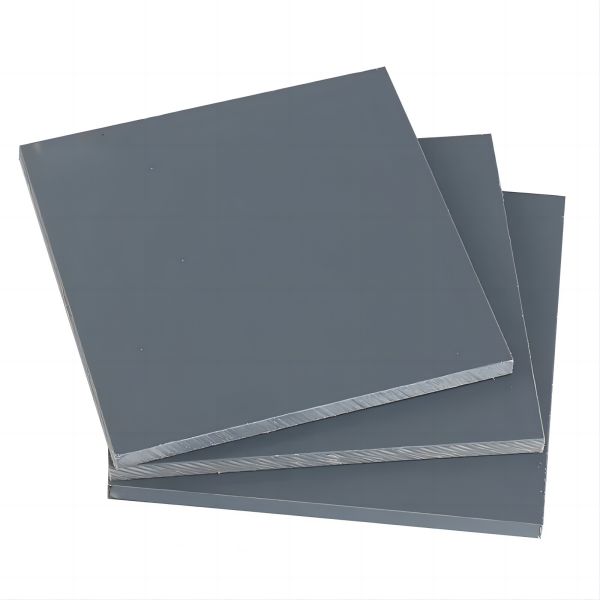
Privacy statement: Your privacy is very important to Us. Our company promises not to disclose your personal information to any external company with out your explicit permission.
In the Colorful material world, materials carry countless possibilities and surprises. Among them, two materials, polyvinyl chloride (PVC) and chlorinated polyvinyl chloride (CPVC), have won people's favor with their unique properties and wide range of applications. The differences between them and their respective characteristics allow people to find suitable choices in various scenarios. Today, let us explore the mysteries of these two materials, understand their characteristics, applications and differences, and feel the charm of materials science.
1. The difference between CPVC and PVC materials
Properties: CPVC is a material processed on the basis of PVC. It has higher heat resistance, cold resistance, flame retardancy and electrical insulation properties. In contrast, PVC materials have excellent chemical stability, corrosion resistance and good processing properties.
Hardness: The hardness of CPVC materials can be adjusted during processing, giving it a wider range of applications. PVC material is relatively hard.
Combustibility: CPVC has better flame retardant properties and requires higher temperatures and more energy to ignite in the air. In contrast, PVC is more likely to cause fires when burned.
Processing difficulty: CPVC materials require higher temperatures and pressures during processing, so processing is relatively difficult. PVC materials are relatively easy to process.

PVC Clear
2. Application of CPVC and PVC materials
Application of CPVC materials: Because CPVC has excellent heat resistance, cold resistance, flame retardancy and electrical insulation properties, it is widely used in electric power, electronics, automobiles, construction and other fields. For example, CPVC wire tubes can be used for power transmission in high temperature, high pressure, and corrosive environments; CPVC plastics can be used to make automobile parts; CPVC sheets can be used for building insulation, waterproofing, and decoration.
Application of PVC materials: PVC materials are widely used in chemical industry, medical equipment, food packaging and other fields because of their excellent chemical stability and corrosion resistance. In addition, PVC materials can also be used to make furniture, toys, daily necessities, etc.
3. CPVC (Chlorinated Polyvinyl Chloride) and PVC (Polyvinyl Chloride) are both derivatives of polyvinyl chloride (Polyvinyl Chloride), but their chemical structures and properties are different. The following are the differences between CPVC and PVC:
Chemical structure: CPVC is a type of PVC modified by chlorination reaction. Introducing chlorine atoms into the PVC molecular chain makes it have better heat resistance, corrosion resistance and flame retardancy. PVC is a type of polyvinyl chloride that does not contain chlorine.
Heat resistance: CPVC has better heat resistance than PVC. CPVC can maintain its mechanical strength and stability at higher temperatures, while PVC is easily deformed, melted or decomposed at higher temperatures.
Corrosion resistance: CPVC has excellent chemical resistance and can resist erosion by a variety of acids, alkalis, salts and other chemical substances. The corrosion resistance of PVC is relatively poor, especially at high temperatures, and it is more susceptible to corrosion by chemical substances.
Flame retardancy: CPVC has excellent flame retardancy. It needs to reach a higher temperature when burning, and it produces low smoke and toxicity when burning. The flame retardancy of PVC is relatively poor, and it easily produces a large amount of smoke and toxic substances when burned.
Application fields: Because CPVC has good heat resistance, corrosion resistance and flame retardancy, it is widely used in various occasions with high temperature, high corrosion resistance and high fire protection requirements, such as chemical industry, petroleum, fire protection, construction, etc. field. PVC is more commonly used in general applications, such as construction, packaging, consumer goods and other fields.
In short, the main differences between CPVC and PVC are chemical structure, heat resistance, corrosion resistance, flame retardancy and application fields. CPVC has better performance than PVC in many aspects, but the price is relatively higher. In practical applications, appropriate materials need to be selected based on specific needs and budget.
4. Summary
CPVC and PVC are two different polyvinyl chloride materials with differences in properties, applications and production. CPVC has higher heat resistance, cold resistance, flame retardancy and electrical insulation properties, and is suitable for use in fields such as electricity, electronics, automobiles, construction, and the production of stage props, film and television props, etc.; while PVC has excellent chemical stability and Corrosion resistance, suitable for the chemical industry, medical equipment, food packaging and other fields, as well as the production of furniture, toys, daily necessities and other props.

CPVC grey sheet
LET'S GET IN TOUCH

Privacy statement: Your privacy is very important to Us. Our company promises not to disclose your personal information to any external company with out your explicit permission.

Fill in more information so that we can get in touch with you faster
Privacy statement: Your privacy is very important to Us. Our company promises not to disclose your personal information to any external company with out your explicit permission.